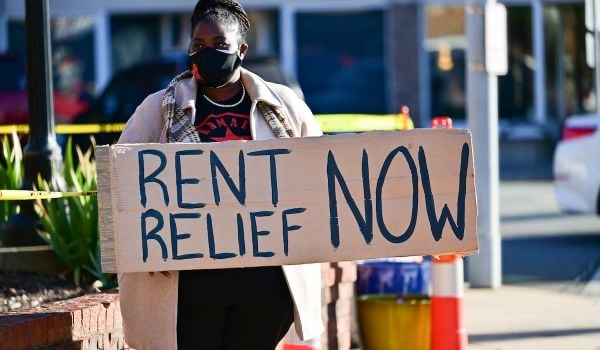In 2016, Denver launched a supportive housing initiative to increase housing stability and decrease jail stays among people experiencing long-term homelessness, as well as frequent interactions with the criminal justice and emergency health systems. One key question among city officials, community partners and advocates boiled down to: Can truly supportive housing help keep people out of the criminal justice system?
Five years later — after intensive, prolonged research by the Urban Institute — the answer is yes. “What the [program] offers us is an alternative to incarceration,” Deborah De Santis, president and chief executive officer for the Corporation for Supportive Housing, said during a July webinar to present the program findings. “Too often, housing gets left out of the conversation,” she continued. “What this allows us to say is that housing has to be part of the mix, and when it is part of the mix we can really show that people cannot just reduce their interaction [with the system] but avoid it.”
Denver’s program is the result of years of groundwork and innovative funding. Officially known as the Denver Supportive Housing Social Impact Bond Initiative, or Denver SIB, it provided supportive housing through a Housing First approach, which aimed to quickly get people out of homelessness and into housing without requiring that participants meet prerequisites, such as negative drug tests or lack of a criminal record.
Funding came from private investors through a social impact bond, alongside public dollars from Medicaid and housing assistance programs. The city agreed to repay the private investors with a return if the program had successful outcomes, which spurred a partnership with Urban Institute to track its impact.
Urban Institute implemented a randomized, controlled trial that compared 363 people receiving supportive housing through the Denver SIB with 361 people who didn’t.
The five-year findings, released last month, show success. Crucially, when people experiencing homelessness were offered supportive housing, most took it and stayed for the long term. The SIB participants spent significantly more time in housing than those in the control group; shelter stays for Denver SIB participants decreased dramatically; their police interactions went down.
The reductions in jail stays and jail days were particularly notable. In the first three years of the program, participants in supportive housing had almost two fewer jail stays and spent an average of 38 fewer days in jail than those who received usual care in the community. That marked a 30 percent reduction in “unique” jail stays and a 27 percent reduction in total jail days.
That success hinges on the nature of the supportive housing, according to Sarah Gillespie, an associate vice president with Urban Institute as well as project director for the Denver SIB. “While there’s a basic definition of supportive housing, implementation can vary greatly — from the quality of the housing itself to the type of supportive service model that’s used,” she notes. “This is one of the highest-quality supportive housing implementation models I’ve seen.”
Gillespie stresses that “housing first does not mean housing only.” That’s especially true with people experiencing chronic homelessness who cycle in and out of jail, often because of nuisance convictions related to loitering, trespassing, sleeping or camping on the street, panhandling, public drinking or drug use. (In 2012, the Denver City Council passed a ban on unauthorized camping, which further criminalized homelessness.)
Before the Denver SIB offered people housing, it started with intensive and intentional outreach. Project partners first defined the SIB’s target population as Denverites with eight or more arrests over three consecutive years. Three of the arrests had to be marked as transient, meaning the person had no address or gave a shelter address. Then project partners worked to reach out to those people on an individual basis.
“We received names, their date of birth, sex, and the street corner where there was a police contact, which did not necessarily mean they were arrested,” notes Carrie Craig, vice president of supportive housing for the Colorado Coalition for the Homeless, one of the two organizations providing supportive housing for the program.
The team not only did street outreach, they frequently visited jails and courts. “If we knew someone was in jail, we would hustle down there and try to meet with them,” Craig says. “In court, we’d work closely with the judges, helping them understand what this project was, working with the district attorneys and defense attorneys and helping them understand that this person might be on the street practicing certain behaviors, but soon they’re going to be in housing and we don’t anticipate those behaviors will continue once they have a place to live.”
Roughly 100 participants agreed to move into the Renaissance Downtown Lofts, a new supportive housing development operated by Colorado Coalition for the Homeless. Before move-in, they were invited to meetings, pizza parties and picnics to help determine the building design, community living policies and supportive services offered. “It wasn’t just clinical groups … residents wanted a cooking class,” says Craig. “It was asking, what else can we do to support you?”
_920_614_80.jpg)
Renaissance Downtown Lofts (Courtesy Colorado Coalition for the Homeless)
Colorado Coalition for the Homeless provided mental health care through assertive community treatment services, a multidisciplinary team that includes service providers like a nurse, therapist, substance use and peer specialists. “Ultimately [the SIB participant] is working with this whole team of people,” notes Craig. “Say the client wants to find a job, they’d work closely with the vocational specialist on the team … it helps build rapport and keep clients engaged.”
The Colorado Coalition for the Homeless also had more flexibility with the social impact bond funding, which translated into other support methods. For example, the organization started a “good neighbor incentive program” at Renaissance Downtown Lofts in which residents received tokens to purchase supplies out of the “good neighbor incentives closet” stocked with bedding, cleaning supplies and other amenities. “We had the flexibility of the funding to purchase items for the incentives closet and use the money as we saw fit,” says Craig.
While arrests still took place among the supportive housing participants, the types of arrests often associated with a lack of housing occurred much less frequently. One of the most important components of the program was that supportive housing was not cut off if the person re-entered the criminal justice system. The Colorado Coalition for the Homeless, for example, continued its advocacy in the court and jail systems and with the Denver Police Department. “One of the goals of assertive community treatment is to provide whatever advocacy we have,” says Craig. “If a client has to go to court we will be there with them, if they so choose.”
With the SIB experiment over, Denver paid the social impact bond investors $4.5 million in housing stability payments and $5.1 million in the jail day outcomes payment. (The sum accounts for their full initial investment, plus an additional $1 million.) The city tapped into its general fund to continue the program through 2021 and is applying for federal funding to start a similar effort.
The Colorado Coalition for the Homeless will maintain many of its supports developed through the program. Chronic homelessness has only increased in Denver since the 2016 program started, leaving city officials and service providers calling for a continued investment in supportive housing through the housing first model.
And as the conversation continues about reallocating police budgets and more effectively addressing mass incarceration, the team’s consensus is that supportive housing is part of the solution. “When we talk about reducing recidivism from jails,” says Craig, “Providing people housing is key to that.”
This article is part of Backyard, a newsletter exploring scalable solutions to make housing fairer, more affordable and more environmentally sustainable. Subscribe to our weekly Backyard newsletter.

Emily Nonko is a social justice and solutions-oriented reporter based in Brooklyn, New York. She covers a range of topics for Next City, including arts and culture, housing, movement building and transit.
Follow Emily .(JavaScript must be enabled to view this email address)


















